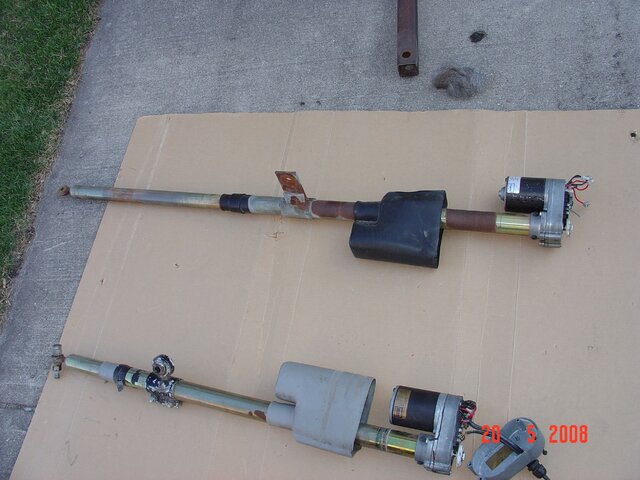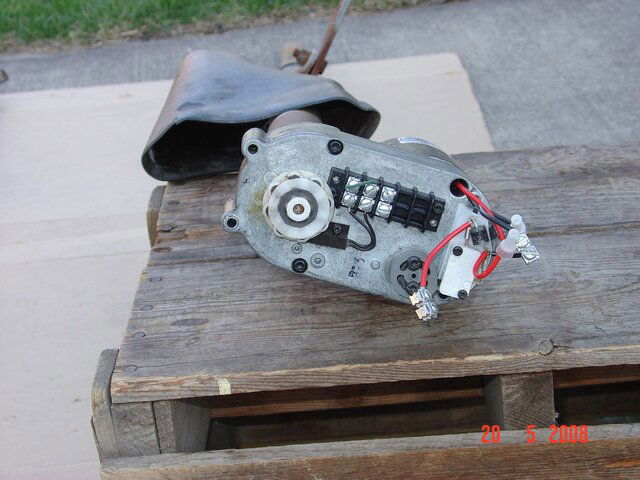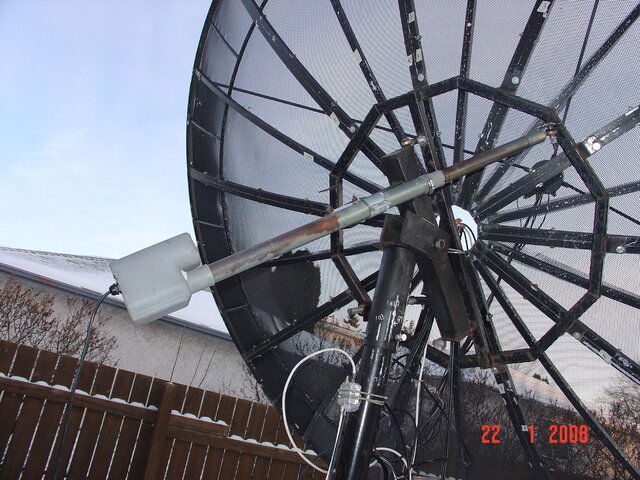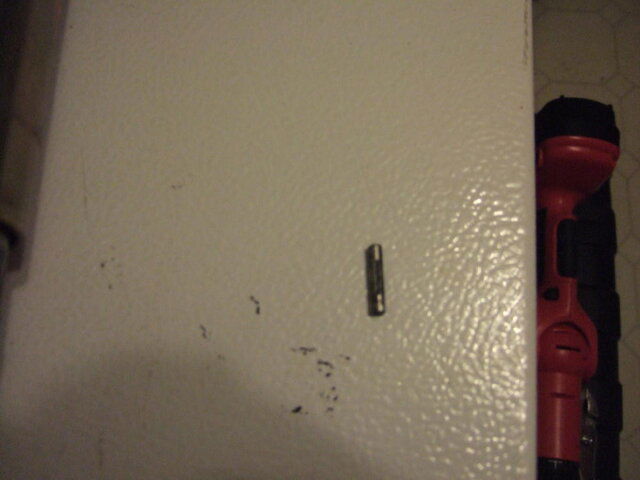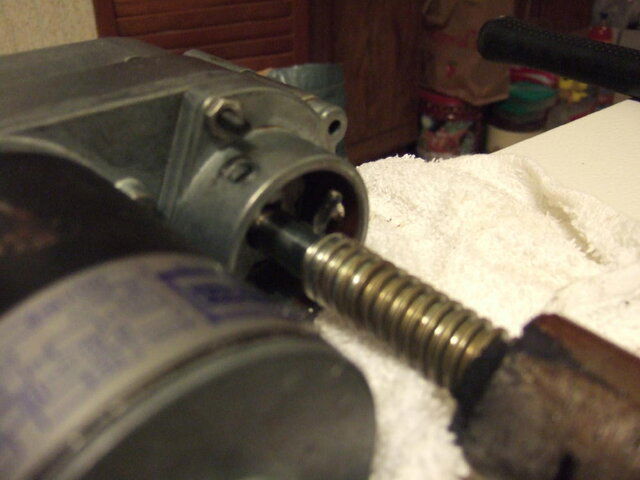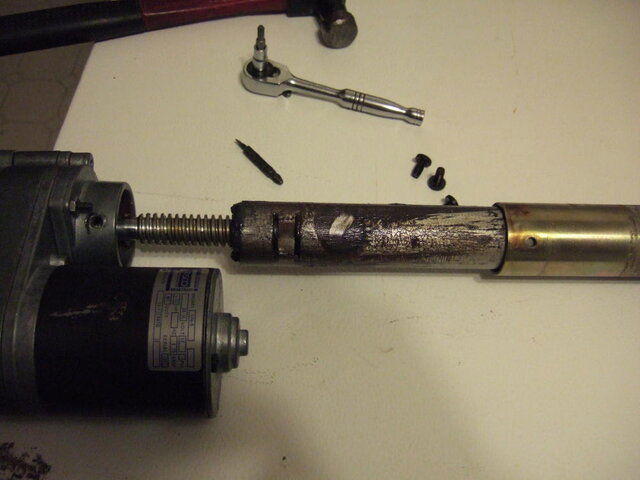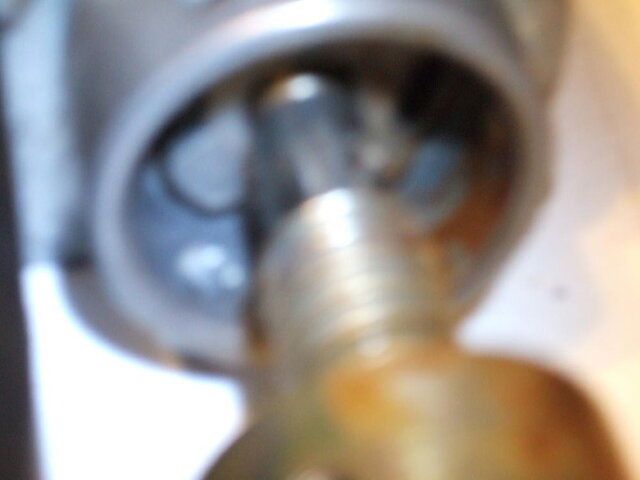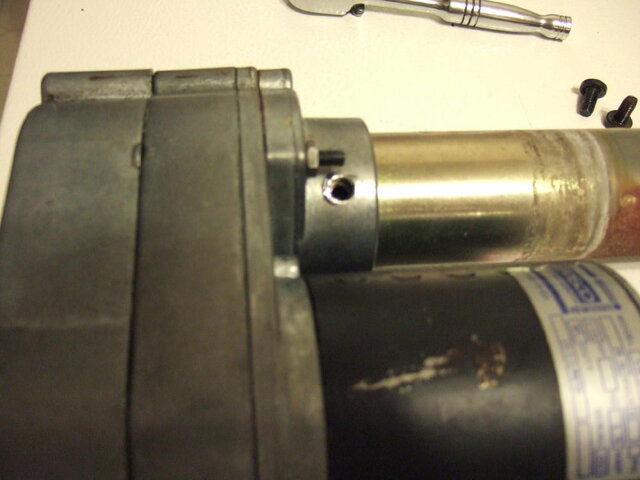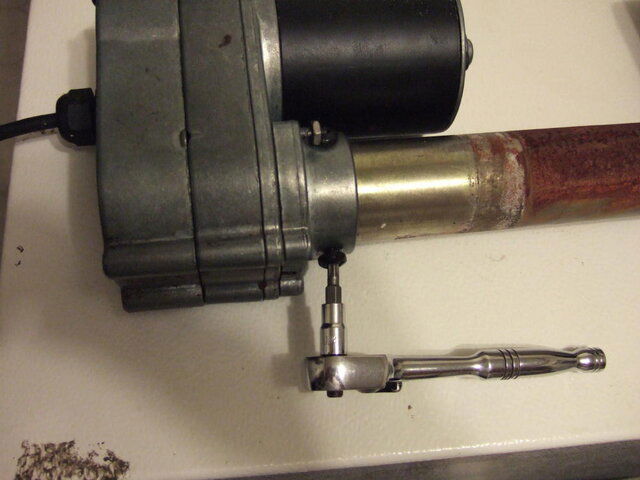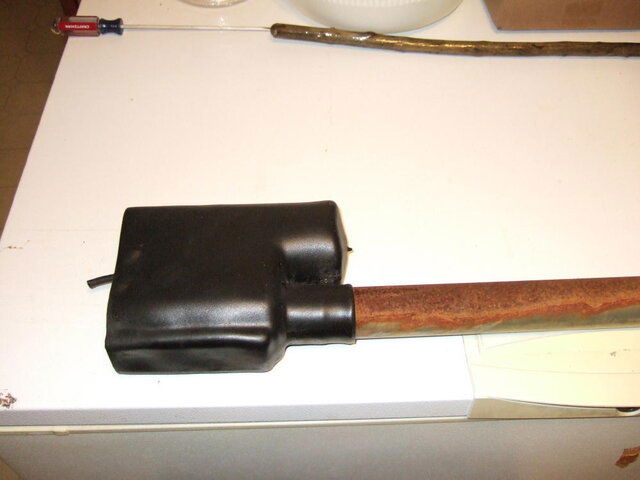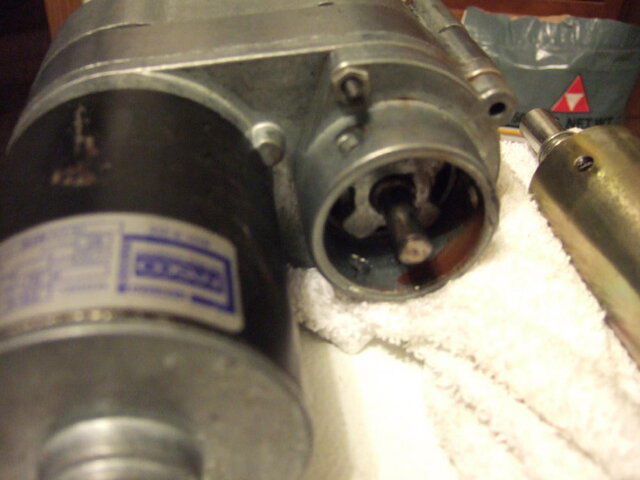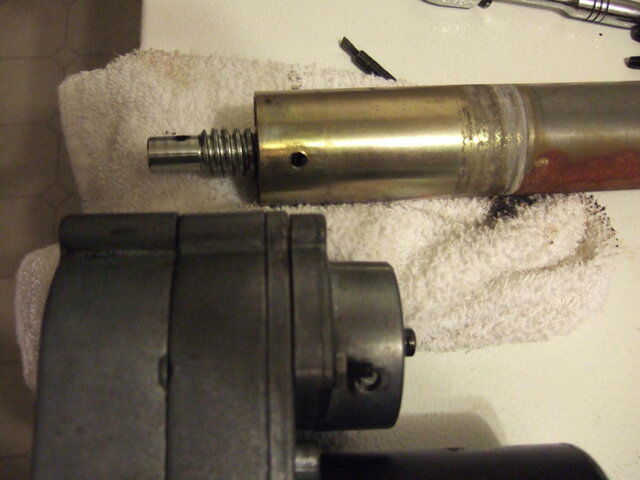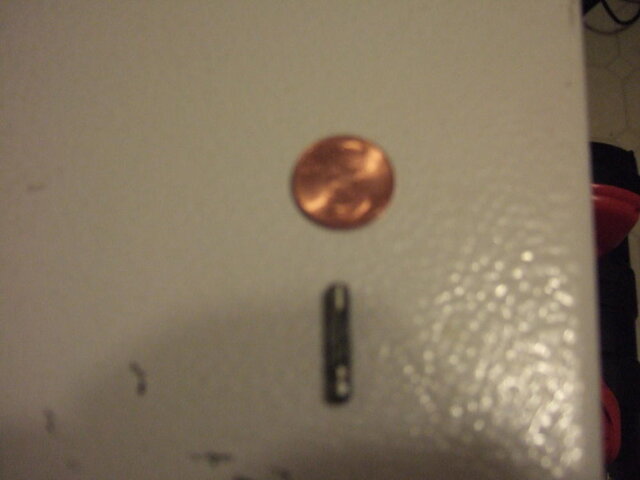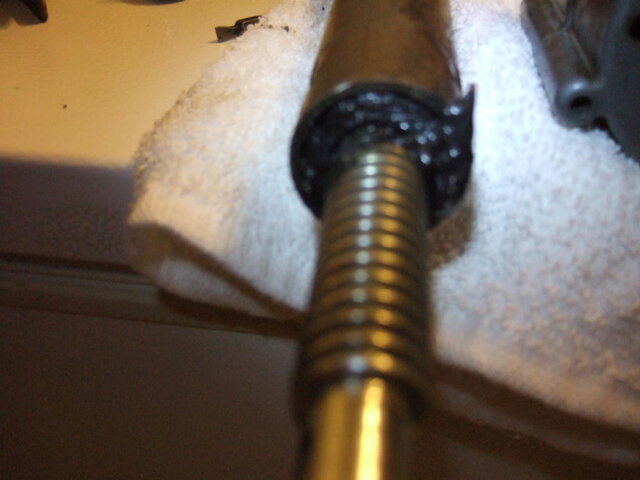My current Actuator on my 12 Foot Mesh Dish will not work with my V Box III as it appears to be some type of 5 wire Optical Sensor.
I have have collected 2 used Actuators - see picture # 1. I thought one was not working but the longer one is in fact working when I connect my 12 VDC Battery Charger to it. The specs for both used units are as follows:
1) A Von Weise Actuator recovered last year from a scrapped 12 Ft Dish:
Model V 76-5
24-36 VDC
1/15 HP
2.75 Amp
19:1 Ratio
Serial L243
Also see pictures2 & 3 for more closups of this V 76-5 Von Weise Actuator.
2) A Fasco Hawker Siddley unit (it's also marked with a Von Weise Label on the side) was recovered from a 7.6 Unimesh Dish
Model V00099BB75
36 VDC
1/15 HP
2.75 Amp
Serial L229
MTR RPM 1550
The second unit used to work with a 7.6 Ft Unimesh Dish and I recovered it in Feb. But it has been disconnected for many years. It has a type of pivot bearing on it - see pic # 4. I haven't been able to test this unit on the Bench as Gabshere advised me it needs to be locked down or mounted on a dish to be able to test it. When I hooked up the Battery Charger to it - it started to move in a circular motion.
Both Actuators appear to be 4 wire units - see pics #2 and #5, so it looks like they may work with my V Box III Dish Controller.
Can anyone advise me as to which is the Best Actuator to connect up to my 12 Footer Mesh Dish? Any comments would be greatly appreciated.
I have have collected 2 used Actuators - see picture # 1. I thought one was not working but the longer one is in fact working when I connect my 12 VDC Battery Charger to it. The specs for both used units are as follows:
1) A Von Weise Actuator recovered last year from a scrapped 12 Ft Dish:
Model V 76-5
24-36 VDC
1/15 HP
2.75 Amp
19:1 Ratio
Serial L243
Also see pictures2 & 3 for more closups of this V 76-5 Von Weise Actuator.
2) A Fasco Hawker Siddley unit (it's also marked with a Von Weise Label on the side) was recovered from a 7.6 Unimesh Dish
Model V00099BB75
36 VDC
1/15 HP
2.75 Amp
Serial L229
MTR RPM 1550
The second unit used to work with a 7.6 Ft Unimesh Dish and I recovered it in Feb. But it has been disconnected for many years. It has a type of pivot bearing on it - see pic # 4. I haven't been able to test this unit on the Bench as Gabshere advised me it needs to be locked down or mounted on a dish to be able to test it. When I hooked up the Battery Charger to it - it started to move in a circular motion.
Both Actuators appear to be 4 wire units - see pics #2 and #5, so it looks like they may work with my V Box III Dish Controller.
Can anyone advise me as to which is the Best Actuator to connect up to my 12 Footer Mesh Dish? Any comments would be greatly appreciated.


